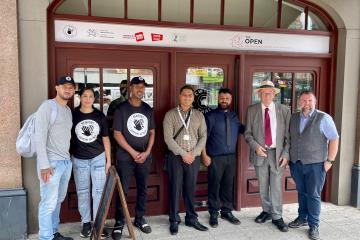The vibrant and historically rich communities of Newport, particularly the district of Pill, have recently found themselves at the heart of an intense media “crossfire,” facing an onslaught of negative portrayals that residents widely dismiss as unrepresentative and unfair. This escalating scrutiny, predominantly from external media outlets, has cast a shadow over an area known for its strong community bonds, diverse population, and inherent resilience.
A significant portion of this recent disparagement stems from a confluence of sources, notably YouTube vloggers who often sensationalize the perceived “run-down” aspects of the locality, and critical narratives published by London-based newspapers. These external perspectives frequently highlight surface-level urban challenges, overlooking the deep-seated pride and positive social dynamics that truly define this Newport community. The focus on superficial decay rather than the underlying vibrancy creates a distorted media perception, fueling negative stereotypes.
Despite the often one-dimensional narratives propagated by external media, the reality on the ground in Newport and Pill paints a profoundly different picture. This is a close-knit community, rich in cultural diversity and boasting a strong sense of collective identity. Residents actively participate in maintaining a vibrant social fabric, demonstrating remarkable resilience in the face of economic shifts and historical urban challenges. The disconnect between these lived experiences and the propagated external image is a source of significant frustration for those who call Newport home.
The tangible impacts of such widespread negative media attention are multifaceted, extending beyond mere reputational damage. Persistent negative portrayals can inadvertently foster detrimental stereotypes, potentially hindering local development efforts and discouraging investment in an area striving for progress. Furthermore, it can chip away at community morale, creating an environment where the proud residents feel misunderstood and unfairly judged by a broader public influenced by incomplete or biased reporting.
This situation prompts a critical examination of media responsibility and the ethical implications inherent in content creation that singles out vulnerable areas without providing adequate context or seeking a deeper understanding. Professional journalism ideally seeks to inform and enlighten, yet the current focus on “stick” for Newport and Pill often appears to prioritize sensationalism over comprehensive reportage, raising questions about the motivations behind such narratives and their long-term effects on local communities.
Ultimately, the “crossfire” that Newport and Pill currently navigate serves as a poignant case study, illustrating the broader challenges faced by marginalized communities globally in their struggle to control their own narratives in an increasingly interconnected and media-saturated world. It underscores the urgent need for more authentic representation, a greater appreciation of local resilience, and a nuanced understanding of the complex social dynamics that truly define such unique urban settings.
Discover more from The Time News
Subscribe to get the latest posts sent to your email.




